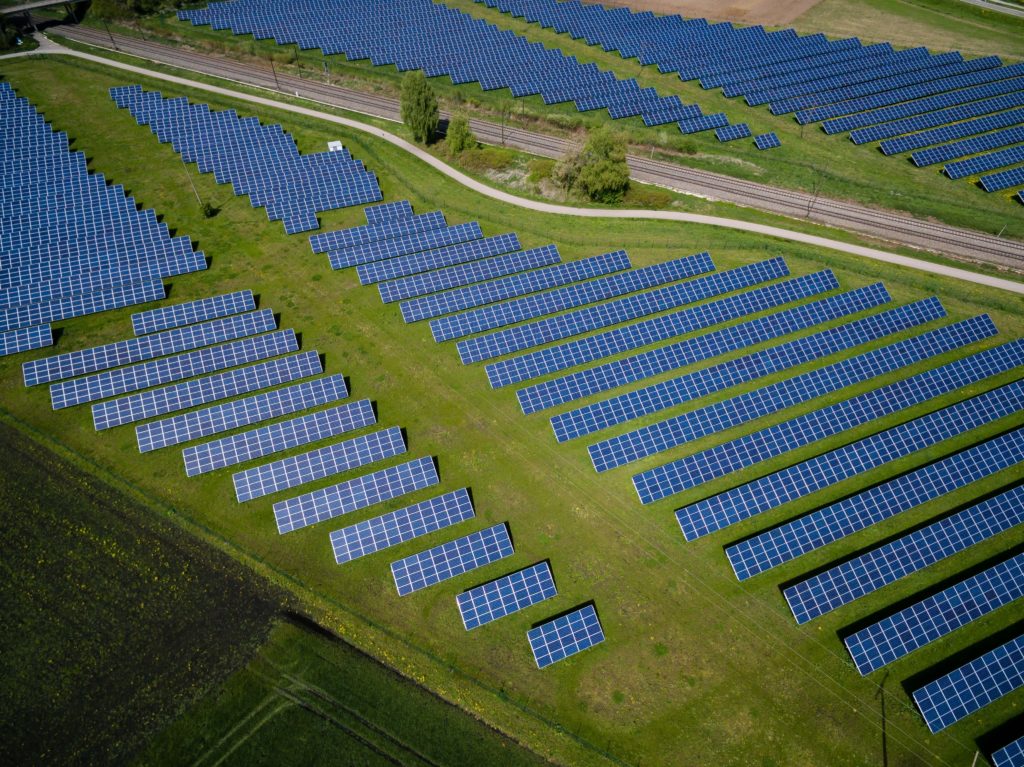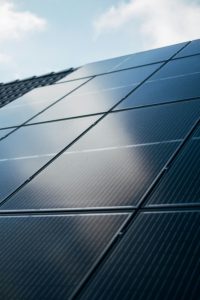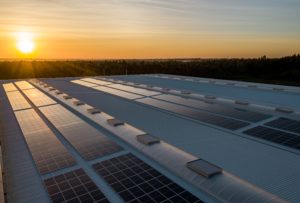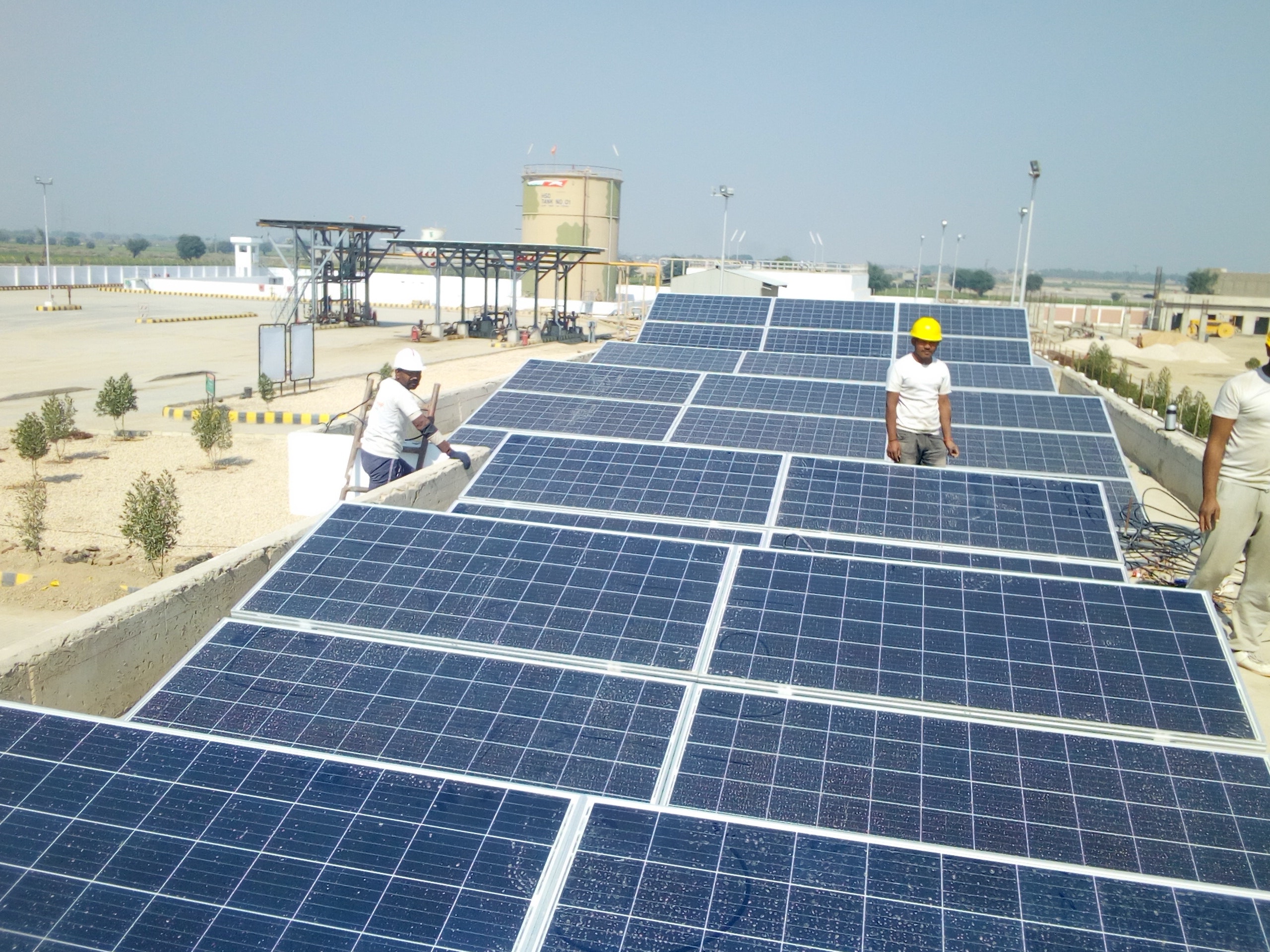What is the solution?
Switching to renewable energies, solar photovoltaic and solar thermal in particular, but also wind or hydroelectricity, reduces the dependence of organisations on fossil fuels and diesel generators. Organisations can choose green energy suppliers for the electricity they consume, or produce renewables themselves.
Solar energy is one of the main levers. Solar expertise could be developed in-house within aid organisations or outsourced relying on partnerships with key solar energy stakeholders. Auto-production of electricity (mainly photovoltaic) is now facilitated by companies offering both a technical support to install solar panels and Power Purchase Agreements whereby they buy the surplus of electricity produced.
Why is it important?
Energy is at the heart of the climate challenge – and key to the solution. Fossil fuels, such as coal, oil and gas, are by far the largest contributor to global climate change, accounting for over 75 percent of global greenhouse gas emissions and nearly 90 percent of all carbon dioxide emissions. To reduce emissions by half by 2030, we collectively need to end our reliance on fossil fuels and invest in alternative sources of energy that are clean, accessible, affordable, sustainable, and reliable. (1)
Renewable energy sources – which are available in abundance all around us, provided by the sun, wind, water, waste, and heat from the Earth – are replenished by nature and emit little to no greenhouse gases or pollutants into the air. Renewables are available in all countries, and their potential is yet to be fully harnessed. Renewables offer better energy security, a way out of import dependency, allowing countries to diversify their economies and protect them from the unpredictable price swings of fossil fuels, while driving inclusive economic growth, new jobs, and poverty alleviation.
Whether it is for headquarters, field infrastructure or emergency operations, aid organisations consume energy mainly from fossil fuels. Low-carbon energy alternatives exist in many cases. Organisations can choose green energy suppliers or produce energy themselves. To cover the needs in the field, organisations often use diesel generators, which are high emitters of CO2. Replacing those generators by renewable energy production, significantly reduces the carbon footprint.

Points of attention
The installation and operation of a renewable energy production facility initially requires a good knowledge of the current energy consumption and an accurate dimensioning of the whole system. The equipment chosen should be robust and, as much as possible, repairable locally or regionally. The equipment should be installed in such a way that operating, maintaining and servicing can be carried out easily and safely (ex. cleaning of solar panels on roofs).
Any energy transition must first include energy sobriety levers in order to reduce energy consumption. The greenest energy remains the energy we do not consume.
Good to know
An energy is said to be renewable when its source is renewed or replenished faster than it is consumed. Historically, it was the case of the first energies used by humanity (wind, sun, water, tides). Some renewable energies cannot produce electricity continuously; they are called intermittent (wind, solar). Others are said to be controllable because it is possible to adjust their production to consumption (hydroelectricity, biomass, wood if trees are re-planted).
Decarbonised energy is an energy that does not emit carbon dioxide (CO2) (or equivalent greenhouse gases) in the process of converting primary energy into final energy. This is the case of nuclear power since it does not produce CO2, although it depends on uranium, which is a non-renewable resource.
However, it is important to bear in mind that all kinds of energy production emit some greenhouse gases, especially if we take into account the energy needed to mine, produce, and transport materials, then build converters or power plants (wind turbines, solar panels, nuclear and other power plants).
No energy is clean, and every machine needs raw materials. To be rigorous, we should use the term “low-carbon” energy.
-
Greenhouse gas emissions per 1 kWh of electricity produced
- Nuclear → 6 g CO2-eq / kWh
- Hydropower → 12 g CO2-eq / kWH
- Wind power → 15 g CO2-eq / kWh
- Solar photovoltaic energy → 44 g CO2-eq / kWh
- Natural gas → 418g CO2-eq / kWh
- Fuel oil → 730g CO2-eq / kWh
- Coal → 1058g CO2-eq / kWh (4)
To ponder
The Global Platform for Action (GPA), is the global initiative to promote actions that enable sustainable energy access in displacement settings. The initiative consulted energy experts in the humanitarian sectors to estimate the number of diesel and petrol generators used to generate electricity in humanitarian operations, in order to propose a possible transition towards solar solutions. Based on responses from six UN organisations and the ICRC, it is estimated that there are currently 11,365 generators in use. This represents approximately $108 million spent by humanitarian agencies on fuel every year, and 194,000 tons of CO2 emitted. Furthermore, it is estimated that a total investment of $236 million would be needed to set up viable photovoltaic installations, saving $70 million in fuel and 126,000 tons of CO2 per year. (5)
Key solutions
-
#1 Diagnosis & monitoring
Carry out an energy diagnosis and regular monitoring of electrical installations in order to gain a better understanding of the electricity consumption, and propose more appropriate equipment. Connected electrical boxes, placed on the electricity meter, easy to install and inexpensive, provide all the necessary information for a good understanding of the real energy needs and a correct dimensioning of the equipment.
-
#2 Sobriety, the number one priority
Develop and implement internal policies and “best practices” to promote energy efficiency and reduce energy consumption. Reduce heating and cooling and set temperature standards for offices, homes, shops and warehouses. Inform all users and/or stakeholders and communicate the results.
-
#3 Solar photovoltaic energy
Photovoltaic (PV) energy is an electrical energy produced from solar radiation by means of photovoltaic panels or plants. The vast majority of photovoltaic panels are made from silicon, which has the property of transforming solar radiation into electricity.
-
#4 Direct solar thermal energy
Solar thermal energy is usually heat produced from solar radiation by means of solar thermal panels. It is used to directly heat premises or domestic water (greenhouses, bioclimatic architecture, solar heating panels, solar water heaters).
-
#5 Wind energy
Wind energy is the kinetic energy of the wind, transformed by a wind generator into electrical energy (wind turbine coupled to a generator) or mechanical energy (direct pumping wind turbine, water mill, sailboat, etc.).
-
#6 Hydroelectricity
Hydraulic energy is the kinetic energy produced by the movement of large amount of water: waterfalls, rivers, tides, waves, etc. This energy can be used directly (water mills) or transformed into electrical energy (hydroelectric power station or micropower station for domestic use).
-
#7 Geothermal
Simple surface geothermal systems, such as climatic wells (canadian or provencal wells), allow the passive use of the ground temperature to heat or cool premises. The air or liquid circulating in a buried pipe network captures the constant temperature of the ground which is then redistributed inside the building.
-
#8 Switch to a green electricity supplier
Switch from a fossil fuel electricity supplier to a low-carbon electricity supplier. An offer is only “green” if the electricity supplier injects the same amount of renewable energy into the grid as its customers consume.
-
#9 Power purchase agreement
In some countries, specialised companies propose their technical support to install an independent power production in a private, independent client’s facility (e.g. photovoltaic panels to cover the roof of an hospital) and offer a power purchase agreement (PPA) to buy the surplus of electricity they produce, before re-injecting it in the network. They are able to cover all technical aspects of a PV installation, including dimensioning, construction, maintenance and operation.
-
#10 Passive measures
The switch to renewable energy should preferably be accompanied by an improvement in the energy performance of the buildings. Various passive measures to reduce energy consumption, mainly air conditioning or heating, can be applied: white reflective paint on roofs, insulation of the external envelope, installation of solar shading.
Tools and good practices
-
Renewable energies: success stories
The European Environment Agency analyses success stories in the field of renewable energy
Read here -
International Solar Alliance resource documents
On installations, contracts, agriculture, mobility, heating, networks, waste
Read here -
Open solar model contracts
Open Solar Contracts streamlines project development and financing processes by providing simple, universally applicable legal agreements that make contracting much faster and less expensive
Read here - GOGLA, the global association of the off-grid solar energy industry
- The Alliance for Rural Electrification
- Information guide - Canadian & Provençal wells (in French)
- A guide to domestic wind turbines
- Solar Water Heating Training Manual for the Kenyan industry
To go further
- Decarbonised energy course, Trajectories (in French)
- Renewable energy resources: production, networks and storage, ADEME (in French)
- Energy issues, fuels and technologies, IEA
- The history of photovoltaics, Terre Solaire (in French)
- Wind energy: functions, benefits, key figures, and issues (in French)
- Our Energy Future: an online course offered by the University of California San Diego
Sources
(1) United Nations, Climate change, Renewable energy – powering a safer future. Read here.
(2) United Nations, Climate change, Renewable energy – powering a safer future. Read here.
(3) IEA, World Energy Balances. Read here.
(4) ADEME, Base carbone ®. Discover here.
Trajectoires, Les énergies décarbonées. Read here.
(5) UNITAR, Global Platform for Action (GPA) on Sustainable Energy in Deplacement Settings. Read here.
(6) PIH’s Solar-Powered Mirebalais Hospital Opens in Haiti, Merging Innovative Design and Healthcare. Read here.
(7) Au Brésil, une favela de Rio tourne à l’énergie solaire. Read here.
(8) Solvatten Solar Safe Water Heater in Kenya, Read here.
(9) Entrepreneurs du Monde, Accès à l’énergie. Read here.
(10) Electriciens Sans Frontières, L’accès à l’électricité et à l’eau. Read here.
Cover photo © Nadeem Jafar/Pexels.
Featured
Photovoltaic solar energy

Solar thermal energy

Photovoltaic solar energy

Solar thermal energy

